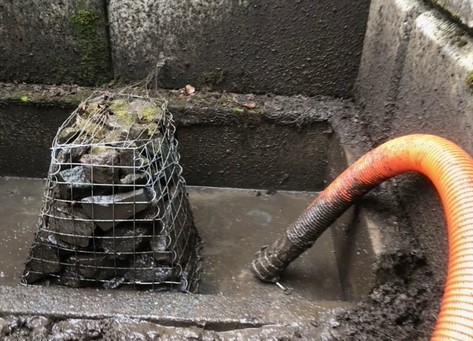Keeping a spotless climate appropriate for people to live and work is typical to regions throughout the planet. This incorporates a framework for proficiently moving wastewater (sewage) and stormwater alongside strong materials through an assortment framework from the source to an earth-safe spot of treatment and removal.
A wastewater assortments framework is ordinarily an organization of lines, sewer vents, clean-outs, traps, siphons, lift stations, and other expected constructions to gather all the wastewater from space and transport it to a treatment plant or removal framework. A few frameworks are “joined frameworks” intended to collect sterile wastewater and storm or surface water overflow.
Sewer frameworks can be situated above or underground, ordinarily running corresponding to roads, lodging, business, and private constructions. This series of lines and courses are designed as gravity stream frameworks, based on a slight grade to help material stream. Such sewage systems need the best cleaning as well. The best techniques for sewer line cleanout are as follows.
Routine Examination and Cleaning
Performing routine examination and improving the main drain cleanout is ideal for keeping a sewer or storm framework working appropriately. Sewer frameworks throughout the planet differ in many subtleties, including the material for the line, shape, size, and area.
Despite these factors, sewer frameworks should be regularly cleaned to guarantee protected, predictable material development.
Sewer cleaners consolidate high-pressure water jetting and a high-stream vacuum source to scour pipes, tidy and vacuum up the material making blockages reestablish and keep up with typical sewer stream.
Usage of a Water-Driven Machine
Where blockage in sewers is found, a spout is embedded into the passage closest to the blockage. The water is delivered at high tension that drives the jam into the fundamental sewer framework.
Here and there, the backup incorporates rock, roots, sand, and other such debris and jetsam driven into the sewer framework through storm channels during awful climate conditions. In such cases, vacuum trucks suck up the stuck garbage and soil and arrange them in a landfill.
The main drain clean out activities can be done using flush tanks, fire hoses, and so on, where an abrupt progression of high speed, deep water is permitted through the sewer, cleaning it successfully.
Hand-Done Mechanical Cleaning
Power rodders, hand poles, and hand-held channel drills are utilized in this technique that can cut, scratch, and promote sewer line cleanout. This can viably cut roots or shred enormous squares of gathered flotsam and jetsam. This activity ordinarily requires development with water-powered cleaning as mechanical cleaning is more successful in clearing blockages than cleaning.
Cleaning Using Chemicals
Synthetic substances are frequently used to control root development, slice through oil, eliminate scents, and dispense with rodents and creepy crawlies. Just synthetic substances endorsed by the neighborhood government are allowed while using this technique.
Flushing Systems
Stream Flushing is used to portray the most well-known strategy used to open a sluggish or halted channel line.
The main drain clean out gear comprises a streaming spout embedded into the whole length of the sewer line, which will flush material back to the sewer vent using high-forced water. If the garbage is heavier, it might require more than one endeavor to clear the line.
There could be numerous blockages in heavier flotsam and jetsam where the administrator should flush the main stoppage to promote sewer cleanout. Revisit and flush the following blockage until all places of jam are eliminated.
Treatment Plants to Clean
A wastewater treatment plant (WWTP) is the basic framework used to change sewer line liquid into a profluent that can be returned to the water cycle with an insignificant natural minor (water recovery).
Developed ooze found in pits and wells at the WWTP can contrarily influence the wastewater treatment process. Consequently, blend machines are utilized for sewer cleanout by flushing the material into a vacuum tube.
Conclusion
The above-mentioned possible cleaning ways are when applied to different problems. Hence, sewers should be cleaned and flushed regularly for hygienics well as heated table adaptations.

